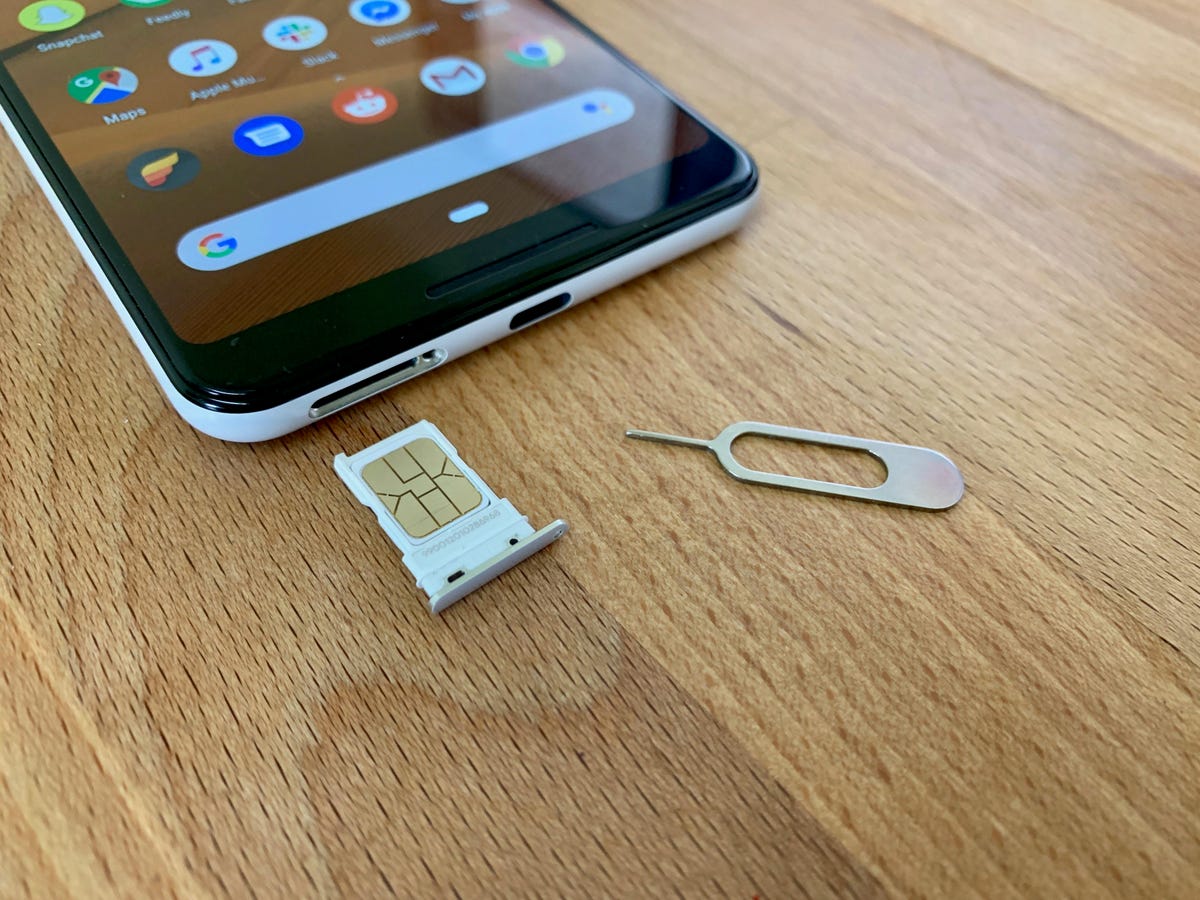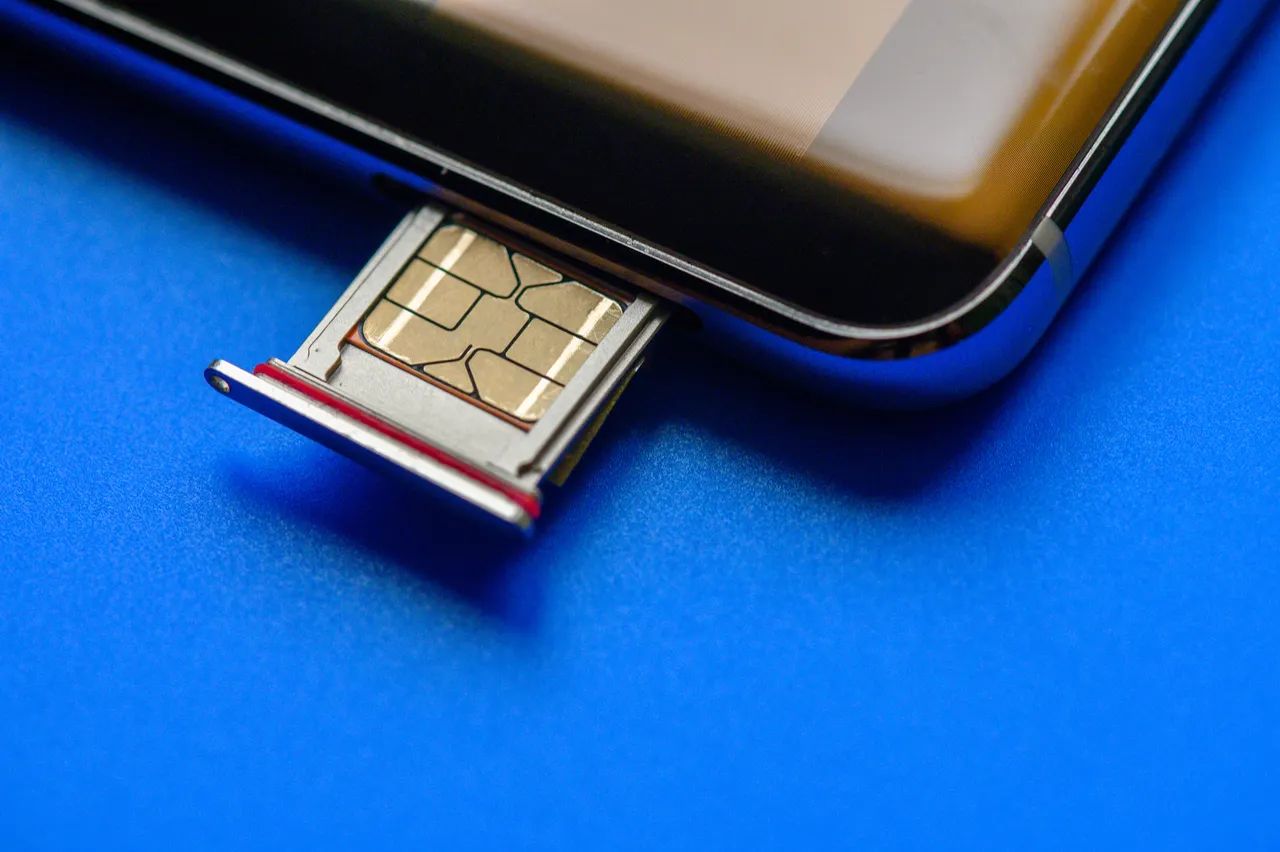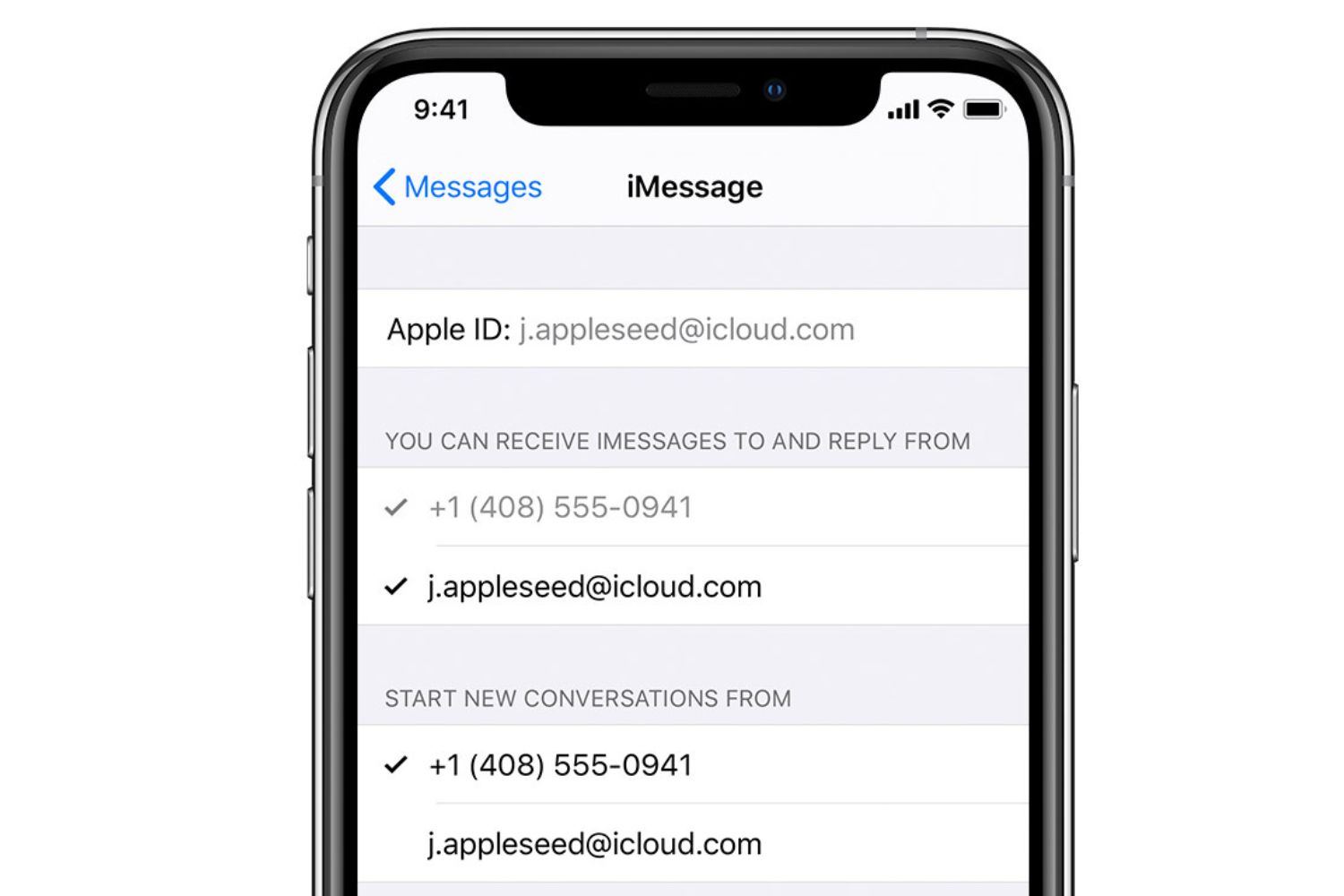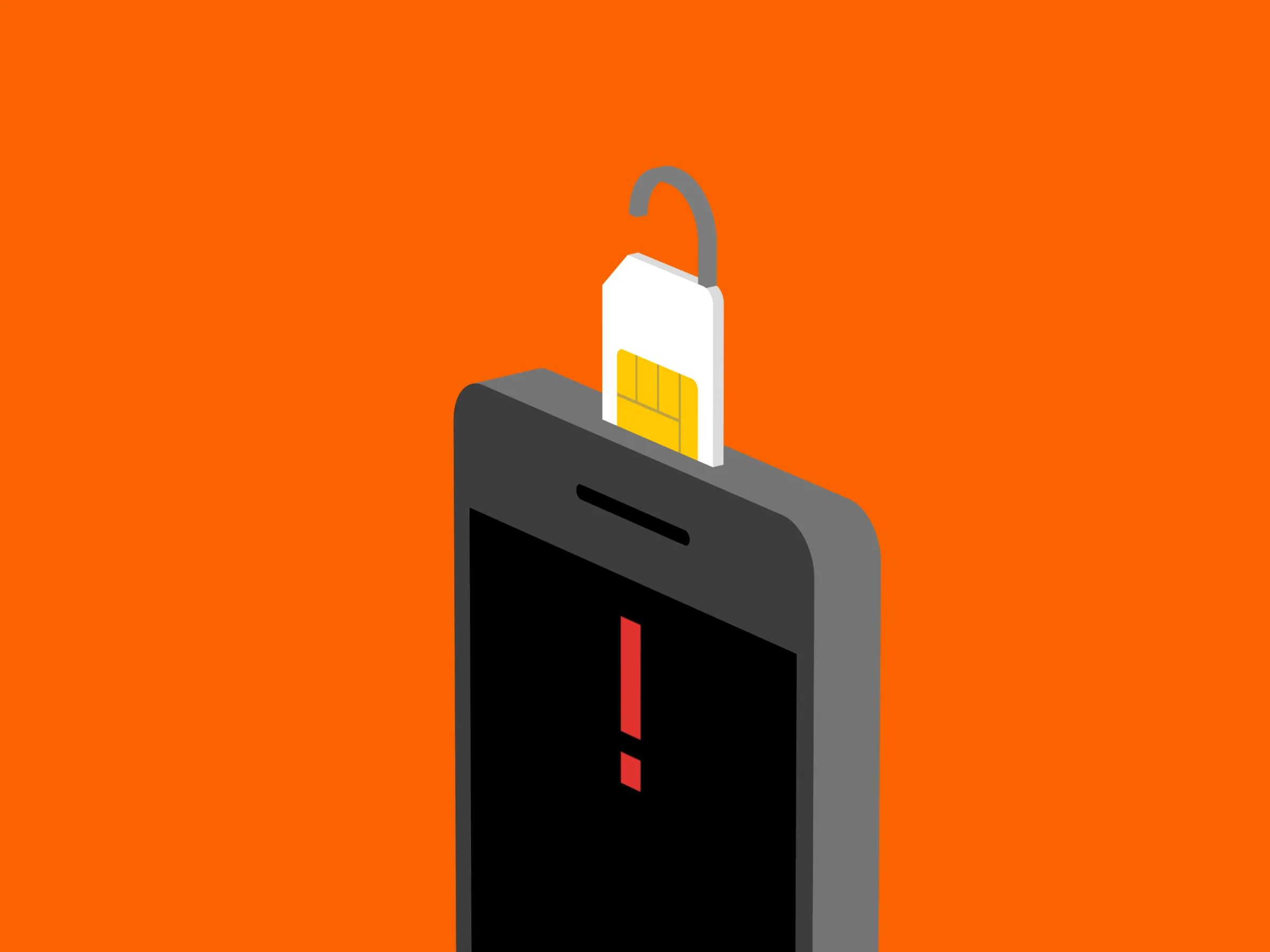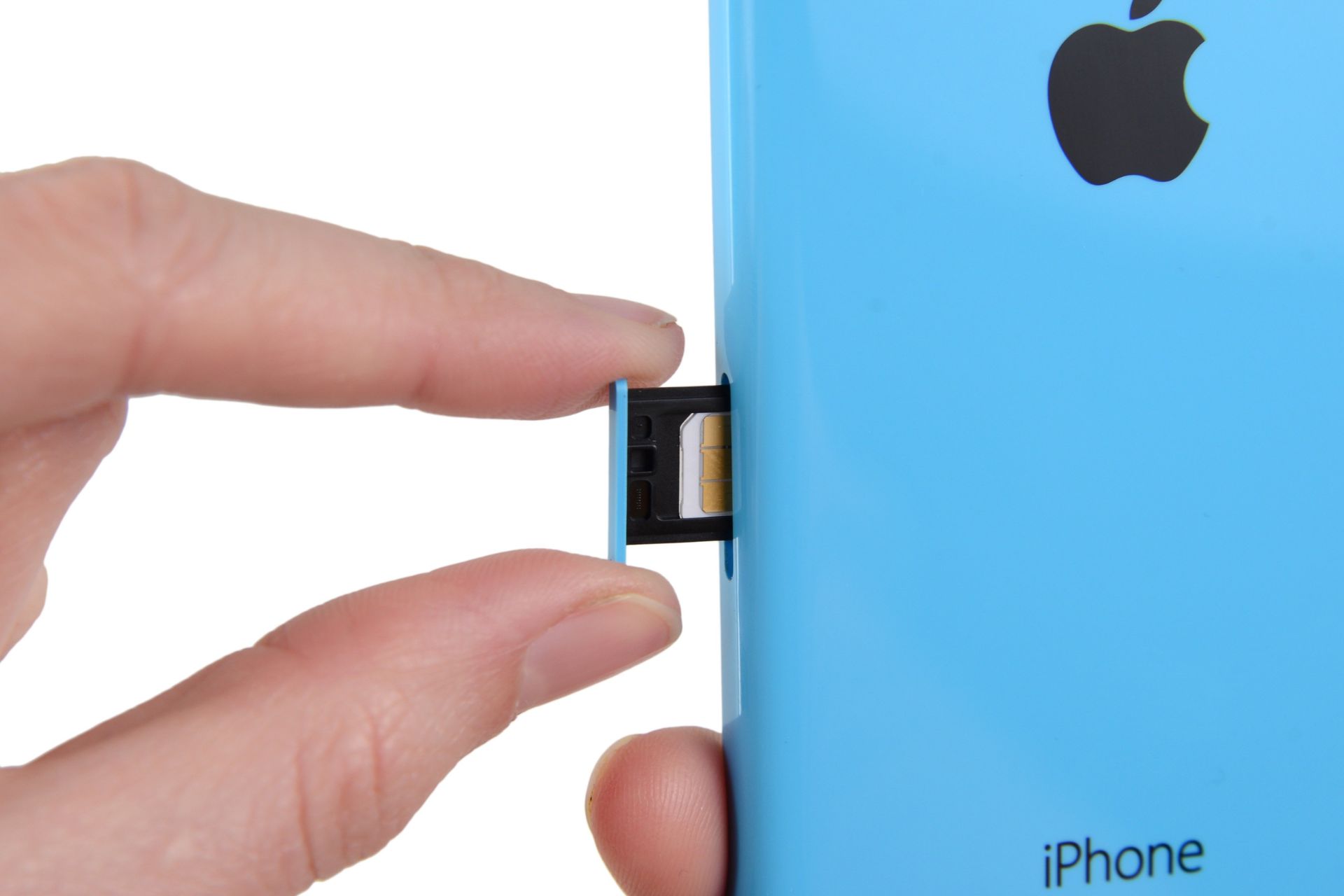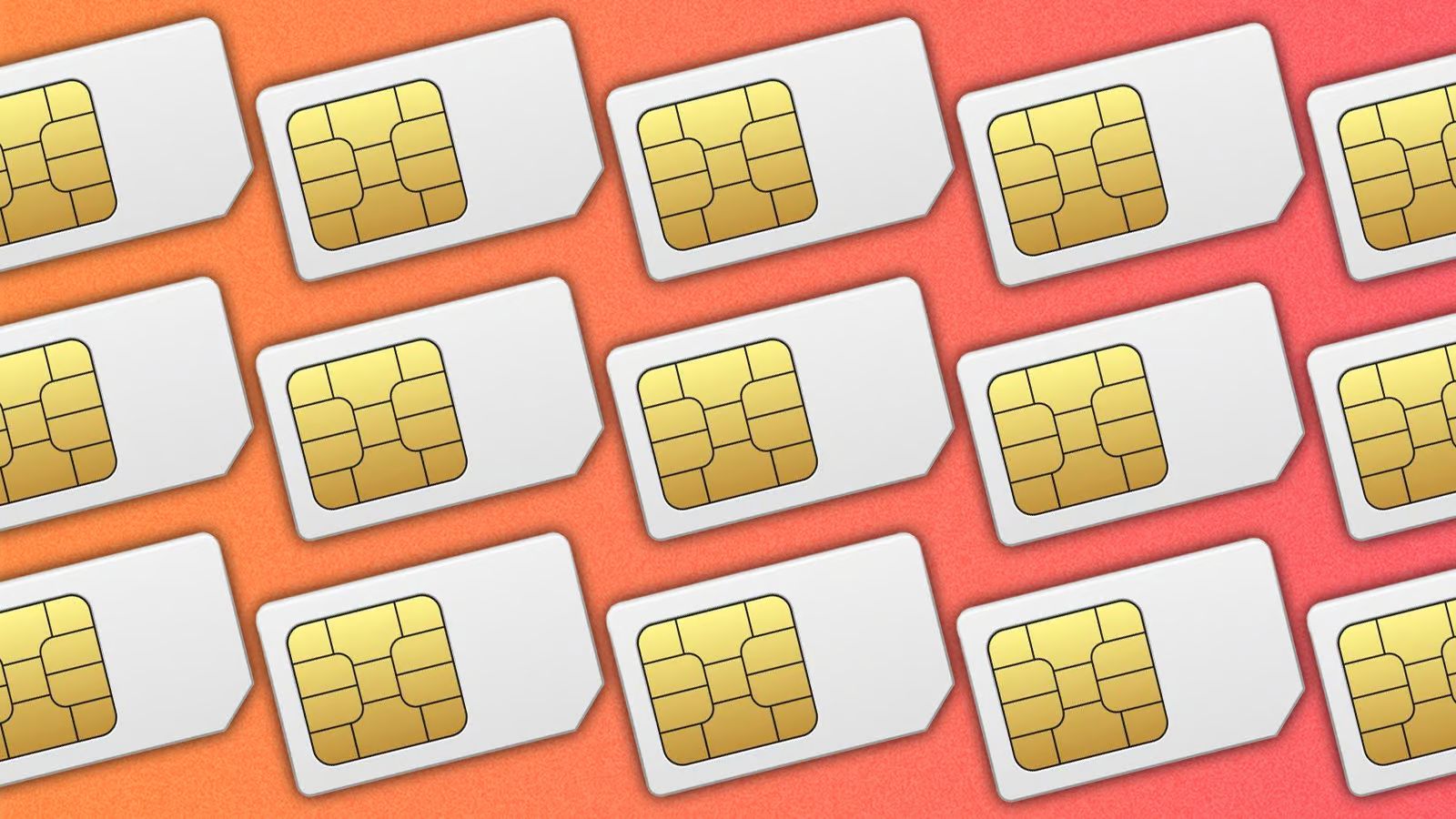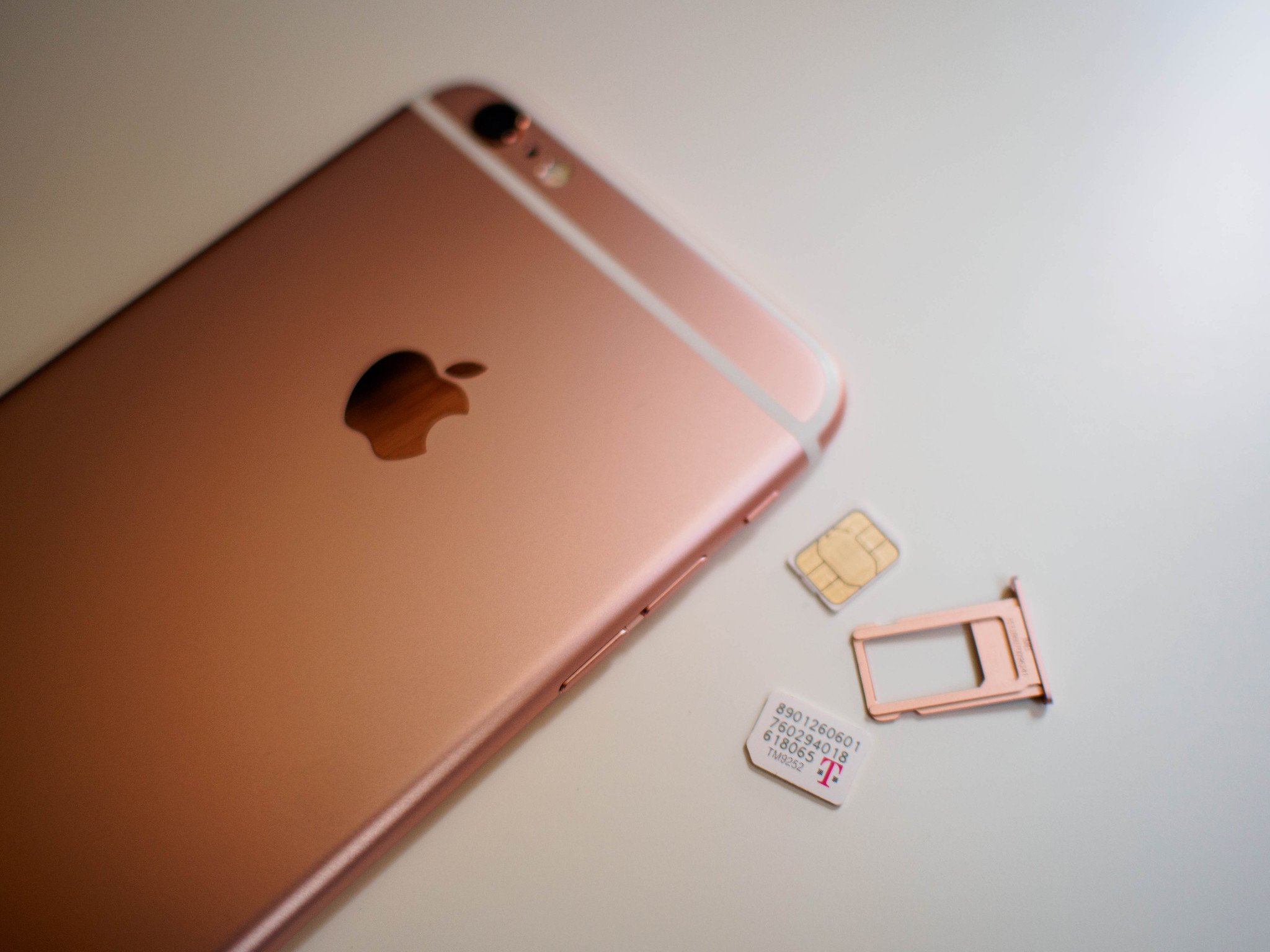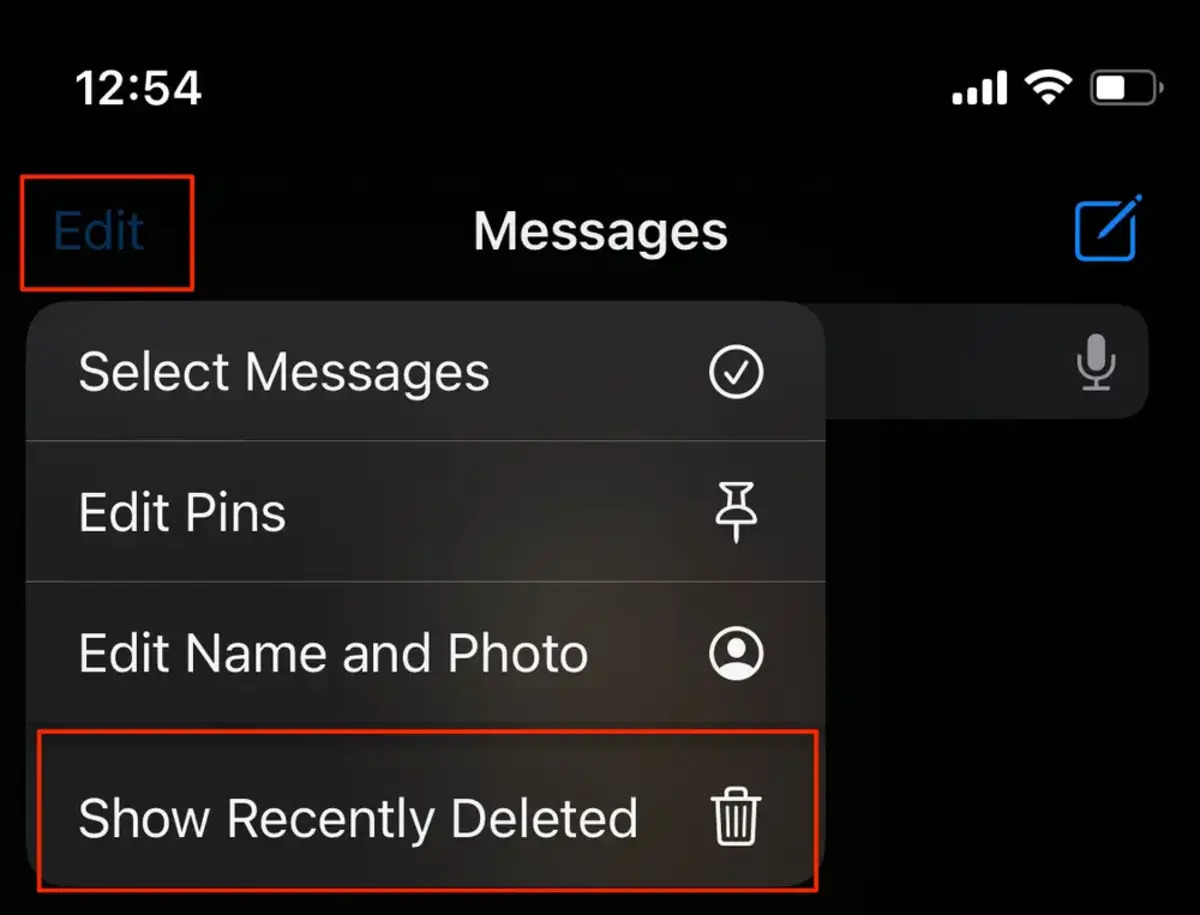Introduction
In today's digital age, the way we communicate has evolved significantly, with instant messaging platforms playing a pivotal role in keeping us connected. Among these platforms, iMessage stands out as a popular choice for Apple users, offering a seamless and feature-rich messaging experience. However, a common query that arises is whether it's possible to use iMessage without a SIM card. This comprehensive guide aims to address this query by exploring the intricacies of using iMessage across different Apple devices without the need for a SIM card.
As we delve into this topic, it's essential to understand the significance of iMessage in the realm of messaging apps. Unlike traditional SMS, iMessage leverages a data connection to send and receive messages, offering a range of multimedia features, including photos, videos, and audio messages. This platform also integrates seamlessly with other Apple services, such as iCloud and FaceTime, creating a cohesive ecosystem for users.
The ability to use iMessage without a SIM card opens up new possibilities for individuals who may not have an active cellular plan or those using Wi-Fi-only devices, such as certain models of iPads and Mac computers. By harnessing the power of iMessage without a SIM card, users can stay connected with friends, family, and colleagues, regardless of their device or connectivity options.
Throughout this guide, we will explore the specific steps and considerations for using iMessage without a SIM card on various Apple devices, including iPhones, iPads, and Mac computers. Additionally, we will address common troubleshooting issues that users may encounter, providing valuable insights to ensure a smooth and uninterrupted iMessage experience.
By the end of this guide, readers will have gained a comprehensive understanding of how to leverage iMessage without a SIM card, empowering them to make the most of this versatile messaging platform across different Apple devices. Let's embark on this journey to unlock the full potential of iMessage, transcending the limitations of traditional SIM-based communication.
Understanding iMessage
iMessage, an integral component of Apple's ecosystem, transcends conventional text messaging by harnessing the power of data connectivity. It operates seamlessly across various Apple devices, including iPhones, iPads, and Mac computers, enabling users to exchange messages, photos, videos, and more, without relying on traditional SMS services.
One of the defining features of iMessage is its ability to differentiate between standard SMS and iMessage communications. When both the sender and recipient are using Apple devices and have iMessage enabled, the messages are transmitted via the iMessage platform. This distinction is denoted by the message bubbles appearing in blue, signifying the utilization of iMessage's robust features.
Moreover, iMessage leverages end-to-end encryption, ensuring that the content of each message remains secure and private. This heightened level of security enhances user confidence, especially when sharing sensitive information or engaging in personal conversations.
Another noteworthy aspect of iMessage is its integration with Apple's iCloud service. This integration enables seamless synchronization of messages across multiple devices linked to the same Apple ID. As a result, users can start a conversation on their iPhone and seamlessly continue it on their iPad or Mac, without any disruption or loss of message history.
Furthermore, iMessage extends beyond traditional text-based communication, offering a plethora of multimedia features. Users can share high-resolution photos, HD videos, and even send audio messages, elevating the messaging experience to a more dynamic and expressive level.
In essence, iMessage represents a paradigm shift in the realm of messaging, offering a versatile and secure platform for Apple users to stay connected. Its seamless integration with other Apple services, robust data connectivity, and emphasis on privacy and multimedia capabilities make it a preferred choice for millions of users worldwide. Understanding the intricacies of iMessage lays the foundation for harnessing its full potential, especially when exploring the possibilities of using it without a SIM card across various Apple devices.
Using iMessage without a SIM card on iPhone
Using iMessage without a SIM card on an iPhone is a feasible option for individuals seeking to leverage the messaging platform's capabilities without an active cellular plan. This scenario commonly arises when users transition to a new iPhone, have a Wi-Fi-only device, or simply wish to utilize iMessage over a Wi-Fi connection without a SIM card.
To initiate iMessage without a SIM card on an iPhone, it's essential to ensure that the device is connected to a Wi-Fi network. Once connected, users can proceed to enable iMessage by accessing the device's settings. Upon navigating to the "Messages" section within the settings, users can toggle the iMessage option, prompting the device to activate the service using the available Wi-Fi connection.
Upon successful activation, users can seamlessly send and receive iMessages using their Apple ID, bypassing the need for a SIM card or cellular connectivity. It's important to note that iMessage utilizes data connectivity to transmit messages, making it an ideal solution for users without an active cellular plan.
Furthermore, the absence of a SIM card does not hinder the functionality of iMessage, allowing users to enjoy features such as multimedia messaging, group chats, and read receipts. This versatility empowers individuals to stay connected and engage in rich, dynamic conversations, irrespective of their SIM card status.
Additionally, users can leverage iMessage across multiple Apple devices linked to the same Apple ID, ensuring a cohesive messaging experience. This seamless synchronization enables users to access their iMessage conversations on their iPhone, iPad, and Mac, creating a unified ecosystem for communication.
In essence, using iMessage without a SIM card on an iPhone opens up a myriad of possibilities for users, enabling them to harness the platform's robust features while leveraging Wi-Fi connectivity. By following the simple steps to enable iMessage, individuals can transcend the limitations of traditional SIM-based communication, embracing a versatile and dynamic messaging experience on their iPhone.
Using iMessage without a SIM card on iPad
Using iMessage without a SIM card on an iPad presents a compelling opportunity for individuals who own Wi-Fi-only models or wish to communicate via iMessage without the constraints of a cellular plan. The seamless integration of iMessage across Apple devices extends to the iPad, allowing users to leverage the platform's robust features and multimedia capabilities without the need for a SIM card.
To initiate iMessage without a SIM card on an iPad, users should ensure that the device is connected to a Wi-Fi network. Once connected, enabling iMessage involves accessing the device's settings and navigating to the "Messages" section. Here, users can toggle the iMessage option, prompting the iPad to activate the service using the available Wi-Fi connection.
Upon successful activation, users can seamlessly send and receive iMessages using their Apple ID, eliminating the reliance on a SIM card or cellular connectivity. This approach empowers individuals to engage in dynamic conversations, share multimedia content, and participate in group chats, all facilitated by the device's Wi-Fi connectivity.
Furthermore, the absence of a SIM card does not hinder the functionality of iMessage on the iPad. Users can enjoy a cohesive messaging experience, including synchronization of conversations across multiple Apple devices linked to the same Apple ID. This synchronization ensures that users can seamlessly transition their iMessage interactions from their iPad to their iPhone or Mac, maintaining continuity and accessibility across their Apple ecosystem.
The ability to use iMessage without a SIM card on an iPad underscores the platform's versatility and adaptability to different connectivity scenarios. Whether users are at home, in a public Wi-Fi hotspot, or traveling internationally, they can rely on iMessage to stay connected and communicate effectively, transcending the limitations of traditional SIM-based messaging.
In essence, leveraging iMessage without a SIM card on an iPad empowers users to embrace a flexible and feature-rich messaging experience, underpinned by the device's Wi-Fi connectivity. By following the straightforward steps to enable iMessage, individuals can unlock the full potential of their iPad, seamlessly integrating it into their communication ecosystem without the constraints of a SIM card.
Using iMessage without a SIM card on Mac
Utilizing iMessage without a SIM card on a Mac offers a seamless and versatile messaging solution for individuals seeking to stay connected across their Apple devices. This capability is particularly beneficial for users who rely on Wi-Fi connectivity and do not have an active cellular plan. By leveraging iMessage on a Mac without a SIM card, users can engage in dynamic conversations, share multimedia content, and synchronize their messages across their Apple ecosystem.
To enable iMessage without a SIM card on a Mac, users need to ensure that the device is connected to a Wi-Fi network. Once connected, the process involves accessing the Messages app and signing in with the user's Apple ID. This step is pivotal, as it establishes the link between the Mac and the user's iMessage account, enabling seamless synchronization of conversations and message history.
Upon signing in, users can proceed to configure the iMessage settings, ensuring that the service is activated using the available Wi-Fi connection. This straightforward process eliminates the reliance on a SIM card or cellular connectivity, empowering users to send and receive iMessages effortlessly.
Furthermore, iMessage on a Mac offers a comprehensive messaging experience, including support for multimedia content, group chats, and read receipts. This feature-rich platform allows users to communicate in a dynamic and expressive manner, transcending the limitations of traditional SMS-based communication.
Moreover, the synchronization of iMessage conversations across multiple Apple devices linked to the same Apple ID ensures continuity and accessibility. Users can seamlessly transition their conversations from their iPhone or iPad to their Mac, creating a cohesive messaging ecosystem that adapts to their connectivity needs.
In essence, using iMessage without a SIM card on a Mac underscores the platform's adaptability and seamless integration into the Apple ecosystem. Whether users are working from home, traveling, or simply prefer the convenience of Wi-Fi connectivity, iMessage on a Mac offers a robust and feature-rich messaging solution that transcends the constraints of traditional SIM-based communication.
By following the simple steps to enable iMessage on a Mac, users can unlock the full potential of their device, embracing a versatile and dynamic messaging experience without the need for a SIM card.
Troubleshooting common issues
As users delve into the realm of using iMessage without a SIM card across different Apple devices, they may encounter certain common issues that can impact their messaging experience. Addressing these issues proactively can help ensure a seamless and uninterrupted iMessage usage, leveraging the platform's capabilities to the fullest. Here are some common issues and troubleshooting steps to overcome them:
-
Activation Problems: Users may encounter difficulties activating iMessage without a SIM card, especially when transitioning to a new device or changing connectivity settings. To address this, ensure that the device is connected to a stable Wi-Fi network and attempt the activation process again. If the issue persists, restarting the device and reattempting the activation can often resolve the problem.
-
Message Sending Failures: In some instances, users may experience challenges when sending iMessages without a SIM card. This can occur due to network connectivity issues or temporary service disruptions. To troubleshoot this, verify the Wi-Fi connection strength and stability, as well as the recipient's contact details. Additionally, restarting the messaging app or the device itself can help resolve intermittent sending failures.
-
Synchronization Delays: When using iMessage across multiple Apple devices without a SIM card, users may encounter synchronization delays, leading to inconsistencies in message history and conversation continuity. To mitigate this, ensure that all devices are signed in with the same Apple ID and connected to Wi-Fi. Manually syncing the devices by initiating a message from one device and ensuring its arrival on the others can help expedite synchronization.
-
Apple ID Authentication Issues: Authentication errors related to the user's Apple ID can impede the seamless utilization of iMessage without a SIM card. To troubleshoot this, verify the Apple ID credentials and ensure that two-factor authentication, if enabled, is functioning correctly. Re-signing in to the Apple ID within the iMessage settings can also rectify authentication-related issues.
-
Multimedia Message Delivery Problems: Users may encounter challenges when sending or receiving multimedia content, such as photos or videos, via iMessage without a SIM card. This can stem from file size limitations, network constraints, or device compatibility issues. Troubleshooting this involves verifying the file size, ensuring stable Wi-Fi connectivity, and confirming compatibility with the recipient's device.
By addressing these common issues and implementing the corresponding troubleshooting steps, users can navigate the intricacies of using iMessage without a SIM card with confidence. These proactive measures empower individuals to overcome potential obstacles and maximize their iMessage experience across various Apple devices, ensuring a seamless and reliable messaging platform.
Conclusion
In conclusion, the versatility and adaptability of iMessage without a SIM card across different Apple devices underscore its pivotal role in modern communication. This comprehensive guide has illuminated the seamless integration of iMessage on iPhones, iPads, and Mac computers, empowering users to transcend the limitations of traditional SIM-based messaging and embrace a dynamic, feature-rich platform.
By understanding the intricacies of using iMessage without a SIM card, users can harness the full potential of this messaging ecosystem, leveraging Wi-Fi connectivity to stay connected, share multimedia content, and engage in expressive conversations. The ability to seamlessly transition conversations across multiple Apple devices linked to the same Apple ID underscores the cohesive nature of iMessage, creating a unified messaging experience that adapts to users' connectivity needs.
Furthermore, the troubleshooting insights provided in this guide equip users with the knowledge to address common issues, ensuring a seamless and uninterrupted iMessage experience. From activation problems to multimedia message delivery challenges, proactive troubleshooting measures empower individuals to navigate potential obstacles and maximize the reliability of iMessage without a SIM card.
As technology continues to evolve, the significance of flexible and versatile communication platforms becomes increasingly pronounced. iMessage, with its emphasis on data connectivity, privacy, and multimedia capabilities, exemplifies the evolution of modern messaging, transcending traditional SMS services and offering a holistic communication experience.
Ultimately, the ability to use iMessage without a SIM card epitomizes the adaptability and inclusivity of Apple's messaging ecosystem, accommodating diverse connectivity scenarios and empowering users to communicate seamlessly across their Apple devices. Whether it's sending a high-resolution photo from an iPad, engaging in a group chat on an iPhone, or seamlessly transitioning conversations to a Mac, iMessage without a SIM card offers a cohesive and feature-rich messaging solution.
In essence, this guide has demystified the intricacies of using iMessage without a SIM card, enabling users to navigate this versatile platform with confidence and harness its full potential across their Apple devices. By embracing the seamless integration of iMessage without a SIM card, users can embark on a communication journey that transcends traditional boundaries, fostering connectivity, expression, and engagement in the digital age.







